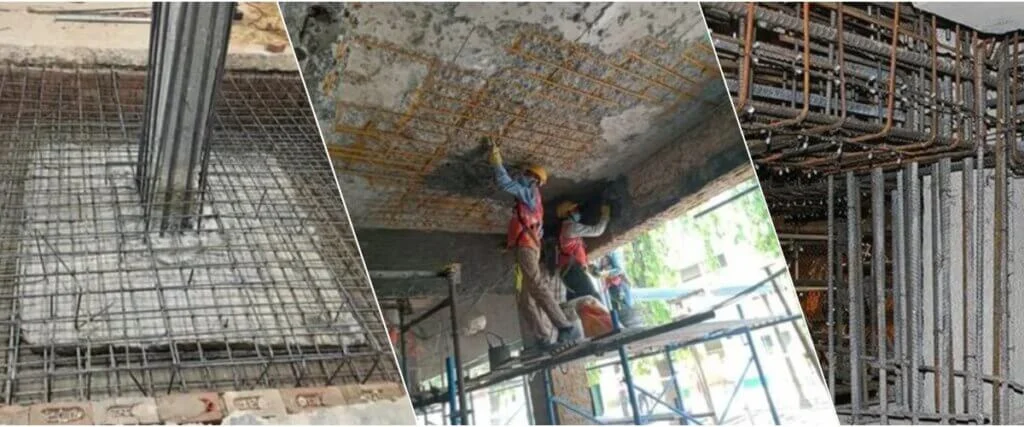
Repair and Rehabilitation of Structures in India
Every building or infrastructure has a limited design life, after which wear and tear begins to show. The process of repair and rehabilitation of structures ensures that damaged or deteriorated buildings regain their strength, safety, and usability. In India, where many structures are decades old, these methods are essential for extending service life. Instead of demolition, repair and rehabilitation offer cost-effective, sustainable solutions for modern cities.
Why Structural Repair Is Necessary
Over time, structures suffer from cracks, corrosion, water leakage, or foundation problems. These issues compromise safety and reduce functionality. The rising demand for structural repair services is a result of growing urbanization and aging infrastructure. Repairing structural damage not only prevents accidents but also saves owners from costly rebuilding. More importantly, it ensures compliance with safety codes, protecting both human lives and property investment in the long run.
Common Causes of Structural Deterioration
Understanding why structures fail is the first step toward effective repair. Common causes include poor construction practices, inadequate materials, exposure to moisture, seismic activity, and overloading. Reinforced concrete often faces steel corrosion, while masonry structures develop cracks over time. Natural disasters like earthquakes or floods accelerate damage. With cities expanding rapidly, the need for rehabilitation of old buildings has increased to prevent unsafe living and working conditions.
Repair Techniques for Damaged Structures
Structural repair involves multiple techniques depending on the type and extent of damage. For cracks, epoxy injection and grouting are widely used. For corroded reinforcement, methods like RCC strengthening or steel jacketing are effective. Waterproofing treatments solve leakage problems, while carbon fiber wrapping helps beams and columns regain strength. These repairs not only restore structural capacity but also improve durability, ensuring that buildings continue to function safely for years.
Rehabilitation Methods for Aging Buildings
Rehabilitation goes beyond simple repairs it upgrades old structures to modern standards. Retrofitting, for example, strengthens buildings against seismic activity. Replacing deteriorated concrete with new materials improves performance. In many cases, structural rehabilitation services include installing advanced waterproofing membranes, shotcreting for damaged surfaces, or guniting for large repair areas. These techniques are critical for bridges, industrial plants, and residential complexes that need long-term safety and extended lifespan.
Importance of Structural Retrofitting
Retrofitting is one of the most important aspects of rehabilitation. It allows older structures to meet current safety codes without demolition. Seismic retrofitting is particularly crucial in earthquake-prone areas of India, where many old buildings were not designed for high seismic loads. Strengthening foundations, columns, and beams through carbon fiber wraps or steel jacketing has become a standard practice. Retrofitting ensures resilience and helps protect human lives during natural disasters.
Applications in Residential Structures
Homeowners often face issues such as wall cracks, slab leakages, or weakened columns. For residential spaces, repair and rehabilitation of structures means providing long-term safety and restoring comfort. Techniques such as RCC jacketing, waterproofing, and column strengthening are widely used in apartments and housing societies. Many Indian cities are now adopting these services to extend the life of old housing complexes, ensuring residents can continue living in safe environments.
Industrial and Commercial Rehabilitation
Commercial and industrial buildings face greater load demands and environmental stress. Factories, warehouses, and shopping malls require specialized repair services like structural rehabilitation for RCC structures or advanced retrofitting. Repairing expansion joints, treating corrosion in reinforcement, and strengthening load-bearing elements are common. Rehabilitation in such structures is not only about safety it ensures smooth business operations, compliance with industrial safety laws, and uninterrupted use of commercial facilities.
Role of Technology in Structural Rehabilitation
Modern technology has made repair and rehabilitation faster, safer, and more reliable. Non-destructive testing (NDT) is used to detect hidden structural flaws without damaging the building. Advanced materials like carbon fiber, high-strength polymers, and self-compacting concrete improve rehabilitation results. Automated equipment for shotcreting services and robotic inspection tools have also raised efficiency. With these innovations, the structural rehabilitation industry in India is moving toward greater precision and sustainability.
Sustainability and Environmental Benefits
Repair and rehabilitation also align with sustainable construction practices. Demolition produces high amounts of waste and consumes significant natural resources. Rehabilitation reduces construction debris and conserves materials. By extending the life of old buildings, it supports eco-friendly urban growth. With increasing focus on green building practices in India, structural rehabilitation services are playing a crucial role in reducing environmental impact while meeting modern living and working demands.
Choosing the Right Contractor for Structural Repair
The success of any structural repair project depends on the expertise of the contractor. Hiring professionals who specialize in repair and rehabilitation of structures ensures that the right techniques and materials are used. Experienced contractors conduct detailed inspections, identify the root cause of damage, and design long-term solutions. Property owners should always verify certifications, past projects, and safety compliance before selecting a contractor for repair or rehabilitation work.
The Future of Structural Rehabilitation in India
The repair and rehabilitation of structures has become a vital service in today’s urban landscape. From fixing cracks in residential apartments to retrofitting large commercial complexes, it ensures safety, durability, and sustainability. With modern techniques and advanced materials, rehabilitation provides cost-effective alternatives to demolition. As India focuses on sustainable urban development, repair and rehabilitation will remain essential in preserving infrastructure, protecting lives, and building a stronger, safer future.

